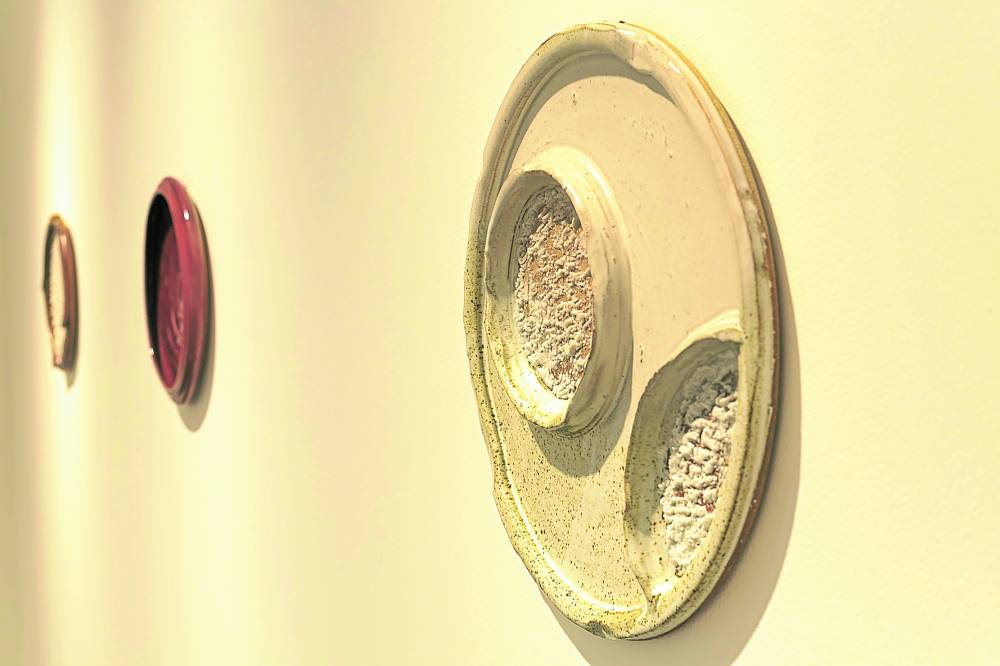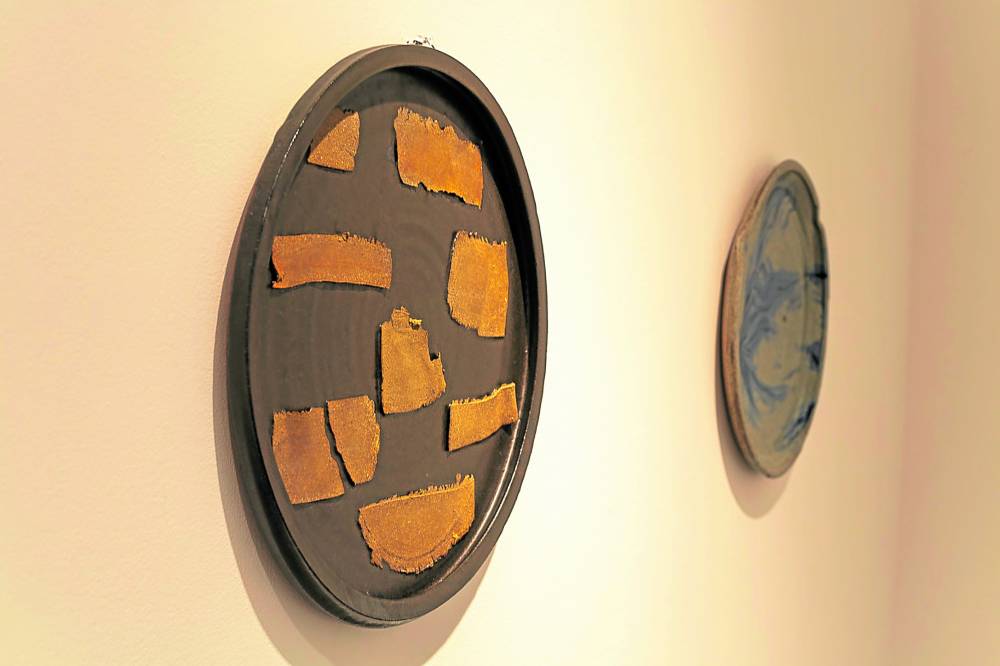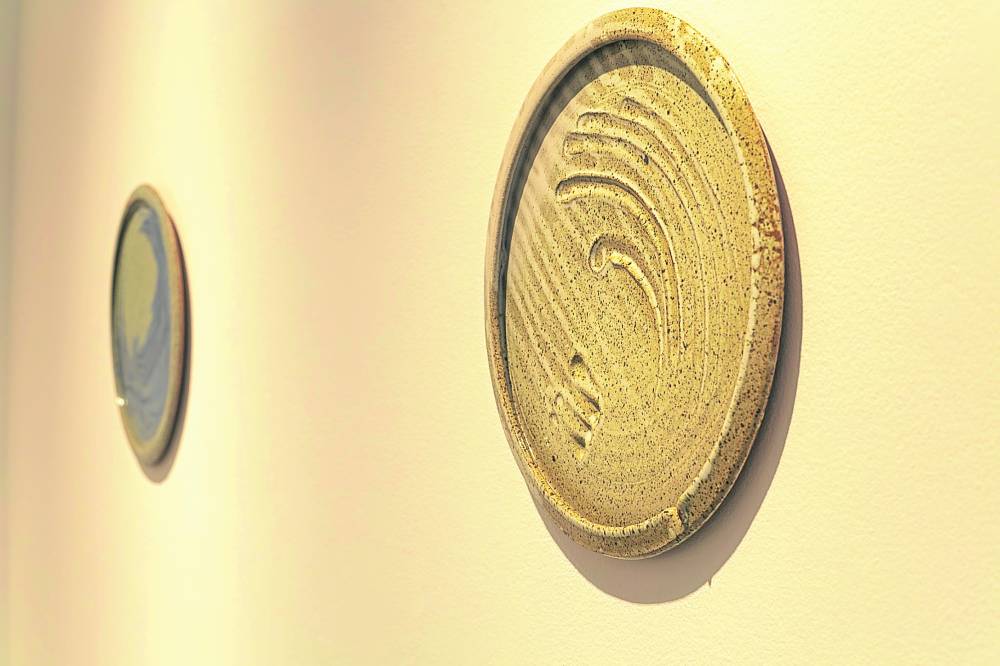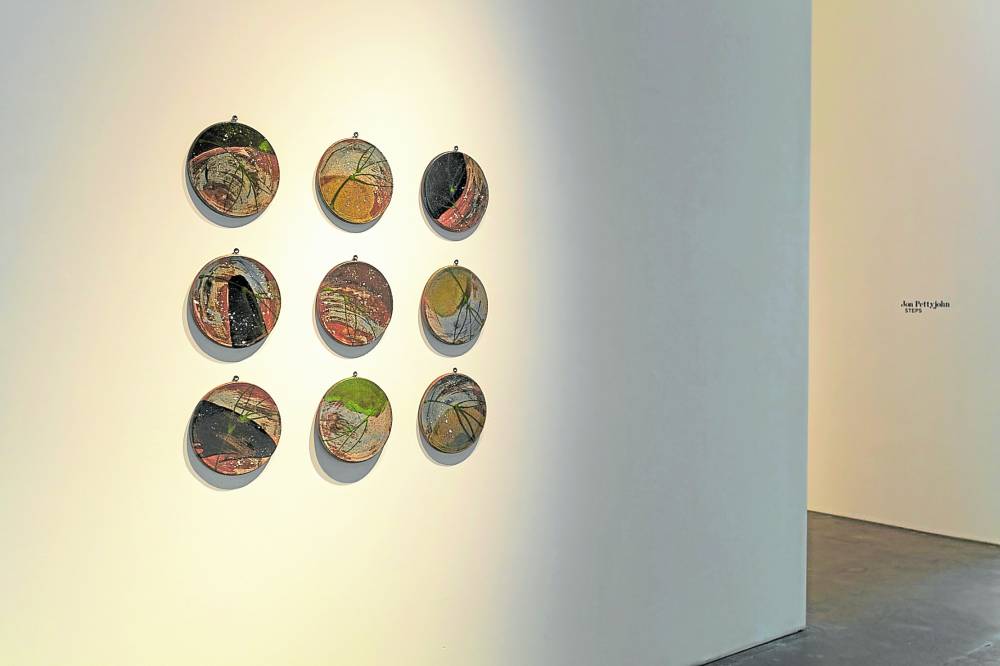
It’s been 50 years this month since that fateful visit to Spain that changed the trajectory of Jon Pettyjohn’s life forever.
At the time, he had dropped out of college and was working at a warehouse for a couple of years. His cousin suggested that he check out the school in an “old, old part of Barcelona.” When he walked into Escuela Massana, he saw a bunch of kids around his age who were making pottery in the ceramics workshop. “It just hit me like a lightning bolt: Maybe I could do this.”
Luckily for him, it was easy to get into the school at the time, he said.
“It was like fate,” added the artist, who aspired to be a musician for years before he discovered pottery (although he admits to not being that good, so “I don’t think that would have ended up well for me”).

Fast-forward five decades later, “Pettyjohn” has become synonymous with pottery and contemporary ceramic arts in the country, and he is still at it with a solo show at Silverlens Galleries in Makati City that opened on June 8 and will run until July 1.
Titled “Steps,” his collection of abstract expressionist pieces of thrown, wall-mounted platters, is a description of his life for the past two or three years.
The exhibit is Pettyjohn’s way of tipping his hat to Alcoholics Anonymous’ (AA) 12-step program, which helped him recover from his addiction.
“A lot of artists and musicians fall into that trap, that kind of lifestyle—drinking and drugs, etc. And for me, that was a dead end. I was a heavy drinker for a long time, like a lot of artists. Eventually, you reach a stage where it starts to interfere with your life and with your work; and your health is not so good and your mental health is not so good,” said Pettyjohn, who, together with his wife Tessy, is a pioneering figure in Philippine contemporary ceramic art.

Wake-up call
His wake-up call came when he realized he was no longer doing the things he felt he should be doing in both his work and personal life as a husband and a father. So he decided to do something about it and checked himself into a hospital for detox.
“AA is the most amazing organization. It’s about addiction but, more than that, it’s about being able to change your life,” the Filipino American artist said. “The message of AA is that if you feel the need to change, it can be done, and The Twelve Steps is a very good pathway to do that.”
Now seven years sober, he is celebrating his newfound clarity. “It’s like being young again, like being reborn.”
At 72 years old, Pettyjohn continues to discover possibilities with his chosen medium. He has already lost count of the number of exhibits he has done since his first one in 1975, but this is the first show where there is nothing standing on the table.

“Potters usually say that we like to put art in people’s hands and on people’s tables. But this this time, I decided to put it all back on the wall,” he said. Although functional and traditional ceramics has always been the root of what he does, ceramics is a flexible medium that lets him explore its many aspects.
“The great thing about ceramic art is it takes more than a lifetime to learn. I still feel as if I’m a student also. I’m still learning different things, and I’m still trying to do things better so it never gets boring,” he said.
“It’s quite funny, we don’t retire. At 72, I’d say I’m at the height of my career. Or maybe I’m not even yet at the height of my career. I feel I have a long way to go. So that’s the beautiful thing about being a craftsman, is that it never ends. It gets better as you grow old.”
Resurgence
During the pandemic, Pettyjohn observed a resurgence of pottery and ceramic arts. Suddenly, there are pottery schools all over the place, and there’s so much online teaching, he said. He attributed it to people looking for things to do during lockdowns but he also related that he has noticed a cycle throughout his decadeslong career where every 20 years or so comes renewed interest in crafts, especially in functional crafts.
He and his wife have already retired from teaching 10 years ago, but they spent a good 10 to 15 years before that imparting their knowledge in pottery to hundreds of students. “It’s pretty amazing. We’re witnessing like a third generation of young artists starting to emerge, and a lot of them were our students, or students of our students even.”

And it’s always interesting, Pettyjohn said. “You will see young people do things that will challenge you in a way, where they’ll do things that you would never do yourself. It’s great. I mean, it’s hard when you’re an older artist to accept that the young people can be good and they can even be better than you, but it’s good to see it. And if you’re smart, you can learn from it.”
“We love to see what young people come up with,” he added, citing conceptual ceramics (where the idea is more important than the actual thing) and using ceramics in performance arts as examples of what this new crop of potters and ceramic artists have come up with.
In the ’70s, Pettyjohn said, there were only a handful of potters in the country and they hardly saw each other. “We worked in isolation a lot of the time, and I realized at some point that that wasn’t a good thing.”
Art of anticipation
He explained that it’s important to go out and see what other people are doing, interact, keep your eyes open and learn from other people.Ceramics, he said, is about anticipation; it’s a long-term thing. To be successful in this field takes not just passion but connection to what you’re doing. For potters, it might take five to seven years before they can even think about doing their first exhibit.
“It’s kind of a long process,” he said. “For example, you make something and it takes some weeks, sometimes even months, before it’s finally finished. So it’s the art of anticipation. You can’t see the finished result but you’re trying to imagine what the finished result would be. It takes that kind of patience.”

Being a potter, he joked, is like being in a constant state of waiting for your gifts on Christmas Day.
“But when you open the gift, a lot of times it’s anticlimactic. You’re disappointed that it wasn’t the gift that you wanted. That’s also true for us. When we actually open the gifts, sometimes it can be depressing or sad,” he said, laughing. “In that case, what you do is you go back to work again. And you start anticipating again. You need to be a person that enjoys that.”
It’s also about support, he said, adding that he was lucky that his mother encouraged him to follow his path. “A lot of young people don’t get support from their parents. A lot of parents will try to discourage their kids from going into the arts and crafts. But nowadays, you can have a very good career in ceramics or fine arts.”
He added, “But the thing is, you have to stick to it. You have to get through those difficult years.” Anything worth doing is hard and entails making sacrifices (and maybe a generous relative or two to help through the lean years), and the difficult times can last a while, but Pettyjohn said it will all be worth it in the end.
“It’s an amazing lifestyle,” he said. With his workshop right next to their home in Calamba, he got to see his kids grow up. “Not all people are that lucky to be able to say that.” INQ












































